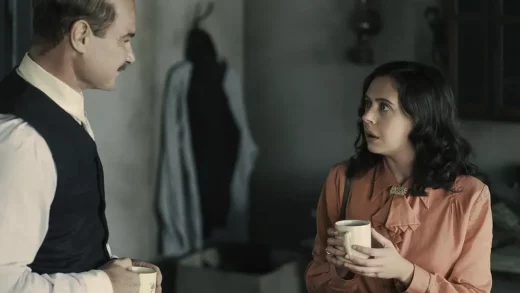Partner Content | How to play baccarat: Rules, odds and strategy

Although it’s a common online table game, many people don’t know how to play baccarat. The good news for those who fall under that category is that it’s simple and requires no skill. Still, baccarat offers a unique blend of tension and excitement that keeps players coming back.
It offers attractive odds compared to other casino games, and players pick it up easily. James Bond famously plays the game during the original Casino Royale (1967), but you don’t have to be a special agent to join in.
Now that baccarat is available online and in small-stake formats, even a beginner can make a winning bet.
How to play baccarat
Players sign into a virtual table that usually seats seven, with spots in front of them to place their bets. Two hands are dealt: one to the player and one to the banker. Bettors must predict whether the player or banker will make a hand closest to a total of nine, or they can bet on a tie.
Baccarat’s allure is in the guesswork — which hand will win?
Some players keep track of previous hands, looking for patterns that favour one hand over the other.
It’s a more engaging way to pick the winner and helps build excitement. Maybe a pattern shows the banker is about to hit after the player won several in a row. Some players consider it a serious strategy, but keep in mind that it’s still only a best guess.
The deal
Baccarat differs from other card games in that face cards and 10s have a value of zero. Aces have a value of one. All other cards are face value.
Another difference is that bettors aren’t dealt a hand of their own. When betting is completed, the player and the banker both receive a pair of cards. The dealer turns over the player’s cards first and declares their value. The player will stand or draw no additional cards if the value is between six and nine.
If the hand of the player or banker totals eight or nine, it’s an automatic win. But if both hands have the same value, they tie. Players who bet on a tie — a 9.6% long shot — receive an 8-to-1 payoff, while all other bets are returned to the players as a push.
Adding up the cards
Learning how to play baccarat is more fun once you understand the value of the cards as they’re revealed.
If the total value is 10 or more, simply drop the value of the first digit to arrive at the actual total.
For instance, a nine and a seven totals 16, so deduct the one to arrive at a value of six.
Drawing a third card
The player or banker — or both — will sometimes draw one additional card, but never more than a total of three cards. If the player’s hand totals five or less, a third card is dealt. Situations in which the banker takes a third card are more detailed.
The banker will draw a third card if the value of their first two cards adds up to 0, 1 or 2.
The banker also takes one more card if the player’s third card is 0, 1, 2, 3, 4, 5, 6, 7 or 9, and stands if the player’s third card is 8.
The hand that comes closest to a score of nine is the winner. If the player and banker tie, all bets on those hands are returned and any bets on a tie are paid.
Bacarrat odds
Winning bets on the player’s hand pay 1-to-1 or even money. Winning bets on the banker’s hand also pay even money, minus a 5% commission, which is the main source of casino profit on baccarat. For instance, a $10 bet on the banker’s hand nets $9.50.
A bet on a tie pays 8-to-1, but it happens just 9.6% of the time. That makes it a negative expectation wager, which suits adventurous players best. Over time, a bet on a tie will lose more money than it’ll make.
One of the advantages of baccarat is that the casino’s advantage or house edge is among the lowest of any table game. The edge is 1.06% on the banker’s hand and 1.24% on the player’s hand. The math shows that the banker will win slightly more often (45.8%) than the player (44.6%).
The difference between the two is the 9.6% chance of a tie. If you remove ties from the equation, the banker wins 51% of the time, which is why betting on the banker is more common. But the advantage is so small that there’s no significant upside to betting only on the banker.
Keep it small to start
The idea is to have fun, enjoy the game and hope to win. Losing — especially large losses, relative to a player’s stake — is not fun.
If the game is punishing, it’ll soon sap your enthusiasm for baccarat or any casino game. Start with a small bankroll, and aim to double it up. There’s no harm in taking a win if you double your stake — you can always come back later to try for more.
The same goes for a loss. If you decide to play with $25 and lose it, you might not want to reach into your pocket again. Better to take a hike and try again some other time.
Baccarat is perpetual, especially online, where you can play at any time. It never ends. You just sit in or out. Remember that when you’re feeling like pressing your luck during a losing session.
is a Toronto-based freelance writer who writes casino content for NorthStar Bets. He is also a freelance Contributing Columnist for The Star. NorthStar Bets is owned by NordStar Capital, which also owns Torstar, the Star’s parent company.
Disclaimer This content was produced as part of a partnership and therefore it may not meet the standards of impartial or independent journalism.
JOIN THE CONVERSATION
Credit: Partner Content | How to play baccarat: Rules, odds and strategy


